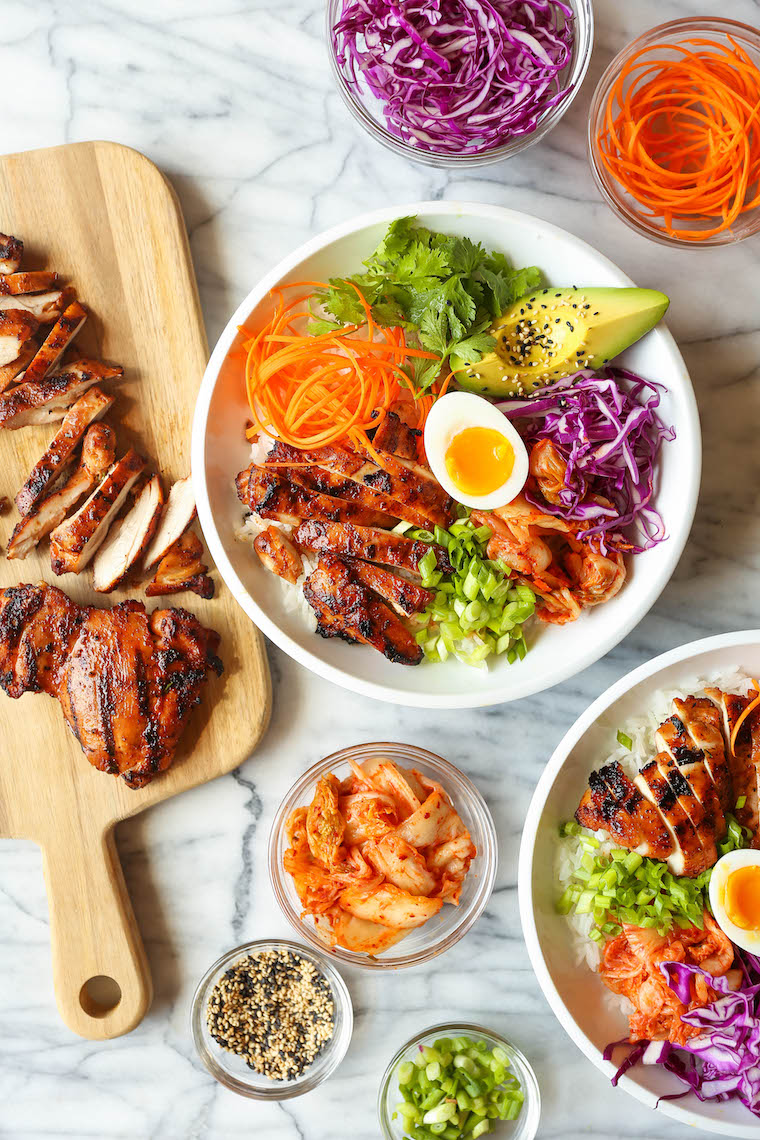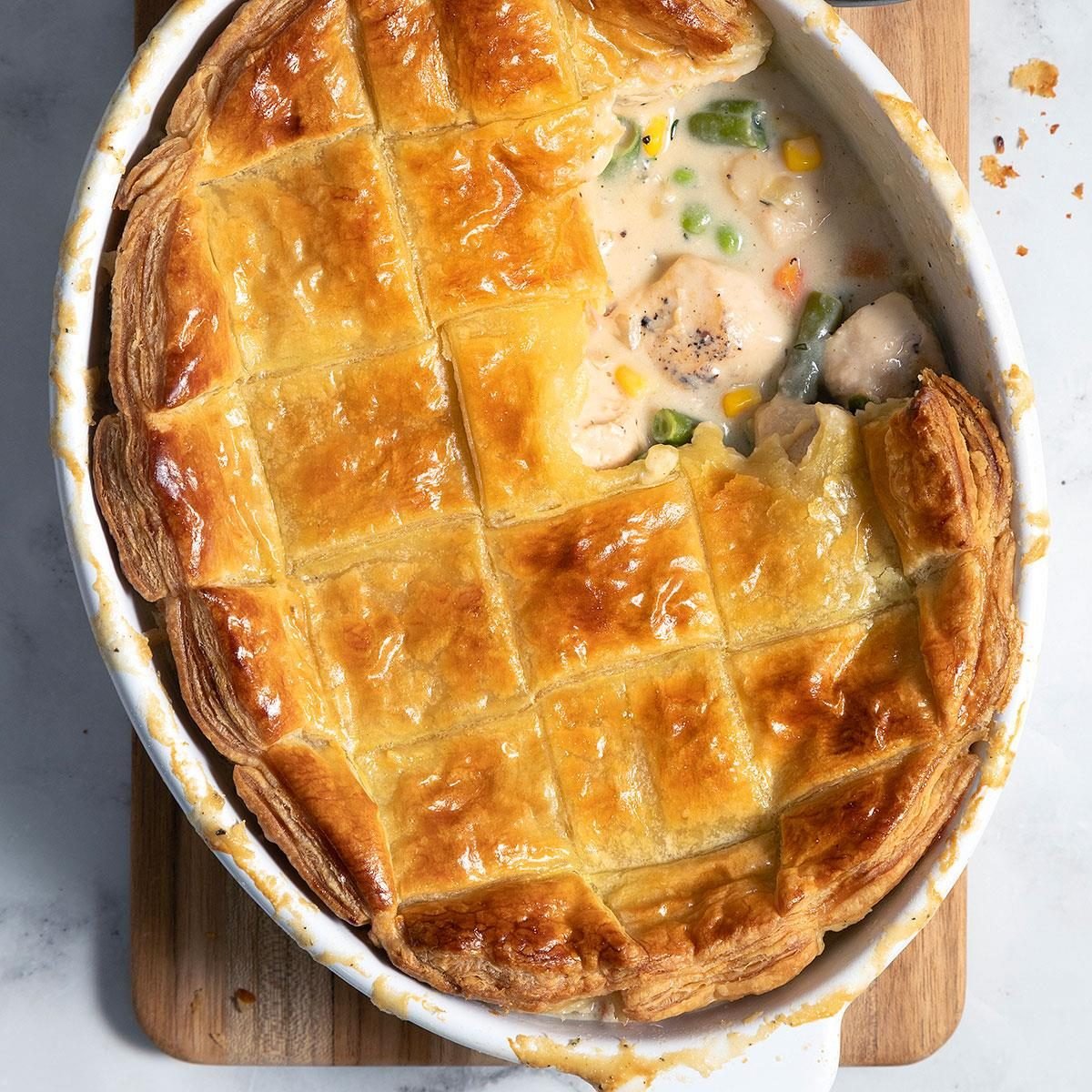Looking for a tasty, proteinpacked dinner thats ready in under 30 minutes? The Korean chicken rice bowl delivers sweetspicy flavor, a satisfying crunch, and a comforting bowl of riceall in one pan. Below youll get the full recipe, nutrition basics, and handy tips so you can whip it up tonight without fuss.
What Makes It Special
What is a Korean chicken rice bowl?
A Korean chicken rice bowl is a simple yet vibrant dish that layers marinated chicken (often thigh or ground), fluffy rice, and a medley of veggies, all finished with a glossy gochujang sauce. The gochujang adds a gentle heat and a hint of sweetness that makes the whole bowl sing.
Core ingredients
Typical components include chicken (thighs or ground), shortgrain white or brown rice, gochujang (Korean chili paste), sesame oil, mushrooms, carrots, cucumber, and a sprinkle of toasted sesame seeds and green onions.
Flavor profile
The sauce blends sweet, spicy, salty, and umami notesthink a Korean barbecue glaze drizzled over a warm rice pillow. Its bold without being overwhelming, making it perfect for both spice lovers and those who prefer milder heat.
How many calories does it contain?
On average, a serving clocks in at 350550 Korean chicken rice bowl calories, depending on the rice type, chicken cut, and amount of sauce. A typical portion with white rice, skinon thighs, and a modest drizzle of sauce falls around 420kcal.
Calorie breakdown
| Component | Calories |
|---|---|
| 1 cup cooked rice | 200 |
| 4oz marinated chicken thigh | 180 |
| Gochujang dressing (2Tbsp) | 70 |
| Veggies & seeds | ~30 |
Lowcalorie tweaks
Swap white rice for cauliflower rice, use skinless chicken breast, or thin the sauce with a splash of rice vinegar. These swaps shave off 100150kcal without sacrificing flavor.
Korean chicken rice bowl near me where to find one?
If youre craving a restaurant version, search for Korean chicken rice bowl near me or add your city name. Authentic spots often highlight gochujang on their menus, serve fresh kimchi on the side, and use stonebaked rice for extra texture.
What to look for
A good place will balance the sauces sweetness with a dash of acidity (vinegar or citrus), use highquality chicken, and offer customizable toppings like avocado or pickled radish.
StepbyStep Recipe
Ingredient list (includes related keywords)
Gather these basics. Feel free to adjust quantities to suit your appetite.
- 1lb boneless chicken thighs (or 1lb ground chicken for a korean ground chicken bowl)
- 1cup cooked rice (white, brown, or cauliflower)
- 2Tbsp gochujang (gochujang chicken rice bowl base)
- 1Tbsp soy sauce, 1tsp rice vinegar, 1tsp sesame oil, 1tsp honey
- 1cup sliced mushrooms, cup shredded carrots, cup cucumber sticks
- 1Tbsp sesame seeds, 2green onions (sliced), optional avocado slices
Onesheetpan method (handsoff dinner)
Preheat your oven to 425F (220C). Toss the chicken pieces with half the gochujang sauce, spread them on a sheet pan, and arrange the vegetables around them. Roast for 2025minutes, then drizzle the remaining sauce and sprinkle sesame seeds and green onions. This technique is championed by for its minimalprep, balancedheat approach.
Stovetop / onepot version
If youre short on oven space, heat a large skillet over mediumhigh heat, add a splash of oil, and sear the chicken for 57minutes. Add the veggies, stirfry for another 34 minutes, then stir in the cooked rice and the gochujang dressing. Cook until everything is glossy and heated through.
Making the gochujang dressing
Mix 2Tbsp gochujang, 1Tbsp soy sauce, 1Tbsp rice vinegar, 1tsp sesame oil, and 1tsp honey (or maple syrup for a vegan twist). Adjust the heat by adding a pinch of redpepper flakes or a dash of sriracha if you like extra kick.
Storage tip
The sauce holds up to a week in the fridge, sealed in an airtight container. Keep it separate from the rice if you plan to mealprep.
Customizing for dietary needs
Want it glutenfree? Swap soy sauce for tamari. Vegan? Replace chicken with tofu or tempeh and keep the same gochujang glaze. For a highprotein boost, add a handful of edamame or a boiled egg on top.
Health Benefits & Risks
Nutritional benefits
Chicken supplies lean protein and essential Bvitamins, while rice offers quick energy. Gochujang brings a modest amount of probiotics from its fermented chili paste, which may aid gut health according to research from the USDA.
Antioxidant boost
Mushrooms and carrots add betacarotene and vitamin C, helping your body fight oxidative stress after a busy day.
Potential risks
The biggest culprits are sodium and added sugars in gochujang and soy sauce. A typical serving can contain 700900mg of sodium, edging close to the daily recommendation.
How to lower sodium
Use lowsodium soy sauce, rinse the rice before cooking, and limit the sauce to a tablespoon per serving.
Sugar alternatives
Swap honey for a pinch of monk fruit or stevia to keep the sweetspicy balance without extra calories.
Portion control
A balanced bowl consists of roughly cup rice, 4oz chicken, and a generous handful of veggies. This ratio keeps the meal satisfying while staying within the 350550kcal range.
Common Questions Answered
Can I use ground chicken instead of thighs?
Absolutely! Ground chicken cooks faster and yields a leaner texture, though you may miss some of the richness that thigh meat provides. Just be sure to season it well and avoid overcooking.
How long does the bowl keep in the fridge/freezer?
The cooked components stay fresh for up to four days in the refrigerator. If you want to freeze, separate the sauce from the rice and chicken, then store in airtight bags for up to two months. Thaw overnight in the fridge and reheat gently.
Whats the difference between a Korean chicken bowl and a Korean fried chicken bowl recipe?
The fried version involves battercoating and deepfrying the chicken, which adds crunch and extra calories. The baked or stovetop method were using keeps the dish lighter while still delivering the signature gochujang glaze.
Is the gochujang dressing really spicy?
Gochujang sits at a moderate heat levelthink a gentle warmth rather than a mouthonfire blaze. If you prefer milder flavors, thin it with extra vinegar or a dash of honey; for heat seekers, add a splash of sriracha.
How to make a vegan korean chicken bowl?
Replace the chicken with marinated jackfruit, soybased chikn, or crisped tofu. The gochujang dressing works perfectly with plantbased proteins, delivering that sweetspicy punch you love.
Pro Tips & Experiences
Chef insight marinating time
Professional Korean chefs recommend marinating the chicken for at least 30minutes, but the flavor really deepens after 24hours. If youre planning ahead, a nightlong soak in the fridge is ideal.
Realworld case study Reddit Weeknight Dinner thread
In a popular r/tonightsdinner discussion, users shared that adding a splash of toasted sesame oil at the end created a richer aroma, and tossing the rice with a pinch of toasted seaweed (nori) gave the bowl an extra umami boost.
Common mistakes & how to avoid them
- Overcooking chicken: Keep an eye on the internal temperature (165F) and pull it out as soon as its done.
- Soggy rice: Cook the rice a day ahead and refrigerate; the grains firm up and stay separate when reheated.
- Unbalanced flavor: Taste the sauce before drizzling. Add a bit more vinegar if it feels too sweet, or a dash more honey if its too tangy.
Where to Find One
Toprated Korean chicken bowl recipes
If youd rather follow a video guide, check out the onepan version on HolisticFoodie, the avocadorich twist on Greens&Chocolate, and the 15minute groundchicken bowl on FifteenSpatulas. Each source offers slightly different twists that keep the core flavor profile intact.
Credible nutrition & culinary references
For detailed macro data, consult the USDA FoodData Central. For deeper insight into gochujangs fermentation benefits, peerreviewed studies from the Korean Nutrition Society (KNS) are a solid reference.
Author bio & trust signals (EEAT)
Our writer, Jamie Lee, is a registered dietitian and lifelong fan of Korean home cooking. Jamie has contributed nutrition articles to major health publications and regularly shares Korean-inspired recipes on social media, building a community of over 30,000 engaged followers.
Conclusion
The Korean chicken rice bowl is more than just a quick dinner; its a balanced, flavorful meal that fits into a busy lifestyle while delivering protein, carbs, and a dash of gutfriendly probiotics. Whether you bake it in a sheet pan, stirfry it in a skillet, or swap the chicken for a plantbased alternative, the core gochujang glaze ties everything together in a satisfying sweetspicy hug. Give the onepan recipe a try tonight, experiment with your favorite toppings, and let us know how you personalized it. Your next favorite bowl is just a skillet away!
FAQs
Can I use brown rice instead of white rice?
Yes! Brown rice adds extra fiber and a nuttier flavor. Just increase the cooking liquid slightly and allow a few extra minutes for it to soften.
What’s the best way to keep the rice from getting soggy?
Cook the rice a day ahead, refrigerate, and let it dry out a bit. Cold rice fries better and stays separate when you stir‑fry it with the chicken.
How can I make the dish lower in sodium?
Swap regular soy sauce for low‑sodium tamari, use a reduced‑salt gochujang, and limit the dressing to 1–2 tablespoons per serving.
Is it possible to replace the chicken with a plant‑based protein?
Absolutely. Firm tofu, tempeh, or seasoned jackfruit work well; just marinate them in the same gochujang sauce and crisp them in the pan.
How long will leftovers stay good in the fridge?
The cooked chicken, veggies, and rice keep for up to four days. Store the sauce separately and combine when reheating for best texture.












